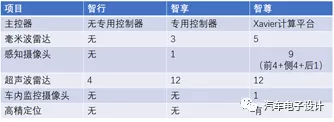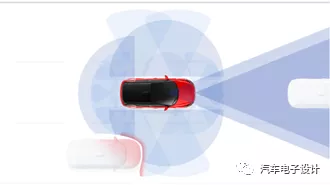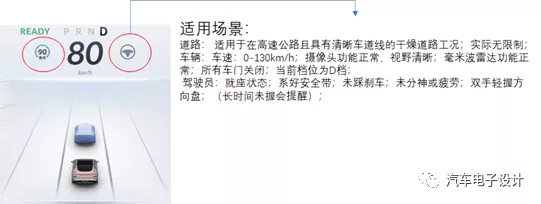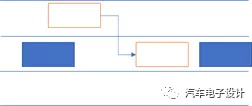<video controls class="w-full" preload="metadata" poster="https://upload.42how.com/v/1618286626.png">
<source src="https://upload.42how.com/v/%E8%A7%86%E9%A2%91%20(1).mp4">
</video>
From January this year, XPeng Motors has opened the NGP automatic navigation assisted driving (beta version) function to users through OTA upgrade. There is a system distinction inside, XP3.0 configuration has more sensors and computing power, and the goal is an auxiliary driving system on highways, covering automatic overtaking, automatic speed limit adjustment, optimal lane selection, automatic switching of highways, automatic access and exit ramps, automatic lane-changing emergency avoidance and other usage scenarios, to achieve traffic cone recognition and avoidance, large truck avoidance, night overtaking reminder, failure vehicle avoidance, congested road super-following and other functions. You can see that KAB technology has made many attempts, which is enjoyable for the round trip between Nanjing and Shanghai. XP2.5, from a principle perspective, was developed according to the definition of traditional L2, focusing on full-speed adaptive cruise control ACC and LCC lane centering functions. I chose this one because on the one hand, for the positioning of my car on high-speed road environments in the short term is relatively few, and on the other hand, the driver includes Yanyan and Baba, with a total of three people driving, and it is more complicated to adapt. The relatively suitable price of XP2.5, including the automatic parking and summoning function, is also interesting. At that time, NGP had not yet been launched when purchased, so this time, I will summarize my thoughts on XP2.5.

## The Impact of Hardware Differences on Perception
XP2.5 is defined according to the Smart Enjoyment version. The cost difference between purchasing XP2.5 and XP3.0 before purchase is 10,000 yuan for hardware costs and 20,000 yuan for simultaneous purchase of the car, totalling a difference of 30,000 yuan. In terms of perception configuration, XP2.5 uses three millimeter wave radars and one forward-facing camera.


Therefore, this system mainly covers three main functions: LCC road center control, ACC adaptive cruise control, and ALC automatic lane change auxiliary. The ALC automatic lane change auxiliary function refers to the ALC system assisting the driver to drive the vehicle into the adjacent lane after judging the environment when the driver presses the turn signal lever under the premise of activating this function. In actual use, ACC automatic cruise and LCC lane centering assistance are the main parts that can be applied in the process of using a single lane, and mainly discuss the use experience of these two parts. ACC automatic cruise is familiar to everyone, which automatically follows the car in a certain speed range on the lane. I will focus on the combined use of LCC function and ACC. The ACC function can be directly turned on by clicking on the big screen. When starting up, the gear shift switch is pulled down once in D gear. To activate the lane-keeping function, you first need to watch a video on the central control screen.
In actual use, you can activate the lane centering assistance (LCC) function by pulling down the gear shift control handle twice. After successfully activating the lane centering assistance (LCC) function, the direction steering wheel icon on the dashboard will turn blue, accompanied by a function entry prompt tone. At this time, the lane centering assistance (LCC) will assist the driver in controlling the steering wheel, and the vehicle speed is still controlled by the adaptive cruise control (ACC) assistance.

In actual use, I mainly use this function in the middle ring and the inner ring.
1) Experience of using cruise control
In actual experience, the most important thing is the distance from the preceding vehicle. Following scenes usually occur if the set distance is relatively long and there are often cars on the road. Therefore, it is better to adjust the following distance setting in advance when using the ACC function. This can be done by manipulating the lever to increase or decrease the following distance (there are 5 levels of adjustment for the following distance, with the default being level 3). In the case of good traffic conditions on the three lanes of the middle ring, when following at speeds of 75-80 kilometers per hour, cars often insert themselves in front at slightly higher speeds. At this time, the speed will slow down to 65 kilometers per hour after inserting, and then wait for the distance to catch up. The solution here is to set a smaller distance, but the judgment of the safe distance is sometimes quite tense.

2) The ability to follow the laneIn actual use, XP2.5’s lane-keeping capability is satisfying on straight roads and high-speed curves due to its direct processing of lane recognition through a camera. Even when some areas have unclear lane markings, XP2.5 can still recognize them and keep the vehicle in the lane. However, in some situations such as sharp curves or long intervals between road markings, XP2.5 often requires human intervention. For this, XP2.5 has three levels of warnings, including “Please hold the steering wheel”, “Please gently turn the steering wheel + warning sound”, and “Please take over the steering wheel immediately + edge of the instrument panel flashing white + warning sound”. It is difficult for drivers to master the speed of taking over because from warning to taking over, there is not much time given to the driver.
Regarding TJA, it is often used in low-speed conditions, especially in inner and middle rings where bottlenecks can suddenly occur. In this case, ACC + LCC is usually used for high-speed driving, and TJA is needed in urban areas as an assist. However, in actual use, frequent insertion of nearby vehicles often occurs due to short distances between cars, causing TJA to exit automatically after 2-3 minutes of low-speed driving (LCC tends to exit earlier than ACC due to limited visibility). Overall, in the current traffic congestion in China, drivers still need to manually drive the car when using TJA.
In summary, the XP2.5 system is a relatively excellent L2 level assisted driving system, but due to limitations in perception and calculation, there is still an objective gap in experience compared to XP3. As a result, XPeng Motors is gradually transitioning from XP3 to XP3.5, where many of the basic hardware and software will be carried over.
This article is a translation by ChatGPT of a Chinese report from 42HOW. If you have any questions about it, please email bd@42how.com.